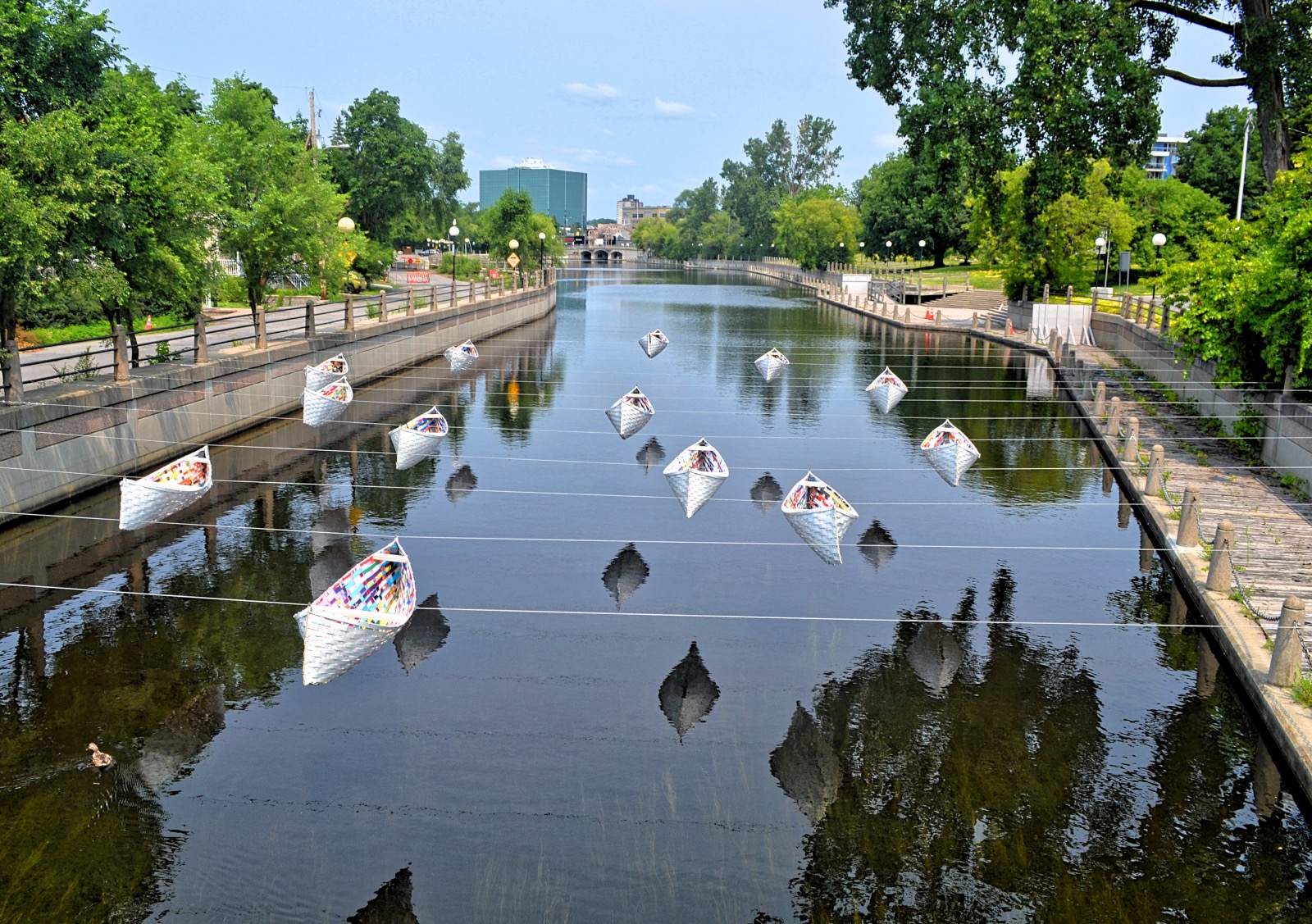
Gatineau’s Culture Trail / Le Sentier Culturel
The Culture Trail is a pedestrian trail that connects outdoor artworks, areas of interest, and exhibition and entertainment venues. Discover Gatineau‘s public art path in the centre of the city!
The city of Gatineau has a recent history. The Algonquin Anishinaabe people and their lands, which this pedestrian route passes through and which are part of their traditional unneeded territory, came first. Then, more than two centuries ago, the region saw the contributions of individuals who left their stamp on it, each in their own unique way, until it became Quebec‘s fourth largest municipality.
The “poetic route” was embellished with 17 new plaques (for a total of 30 poetic extracts), those responsible for the cultural component of the municipality unveiled on Wednesday, July 7, while promising other “surprises to be discovered” during summer.
In addition to its twelve main points of interest (cultural, heritage, and tourism buildings), the Cultural Trail includes 29 works of urban art (some of which are only on display for a limited time), as well as a portion of the city’s summer cultural programs.
Traces
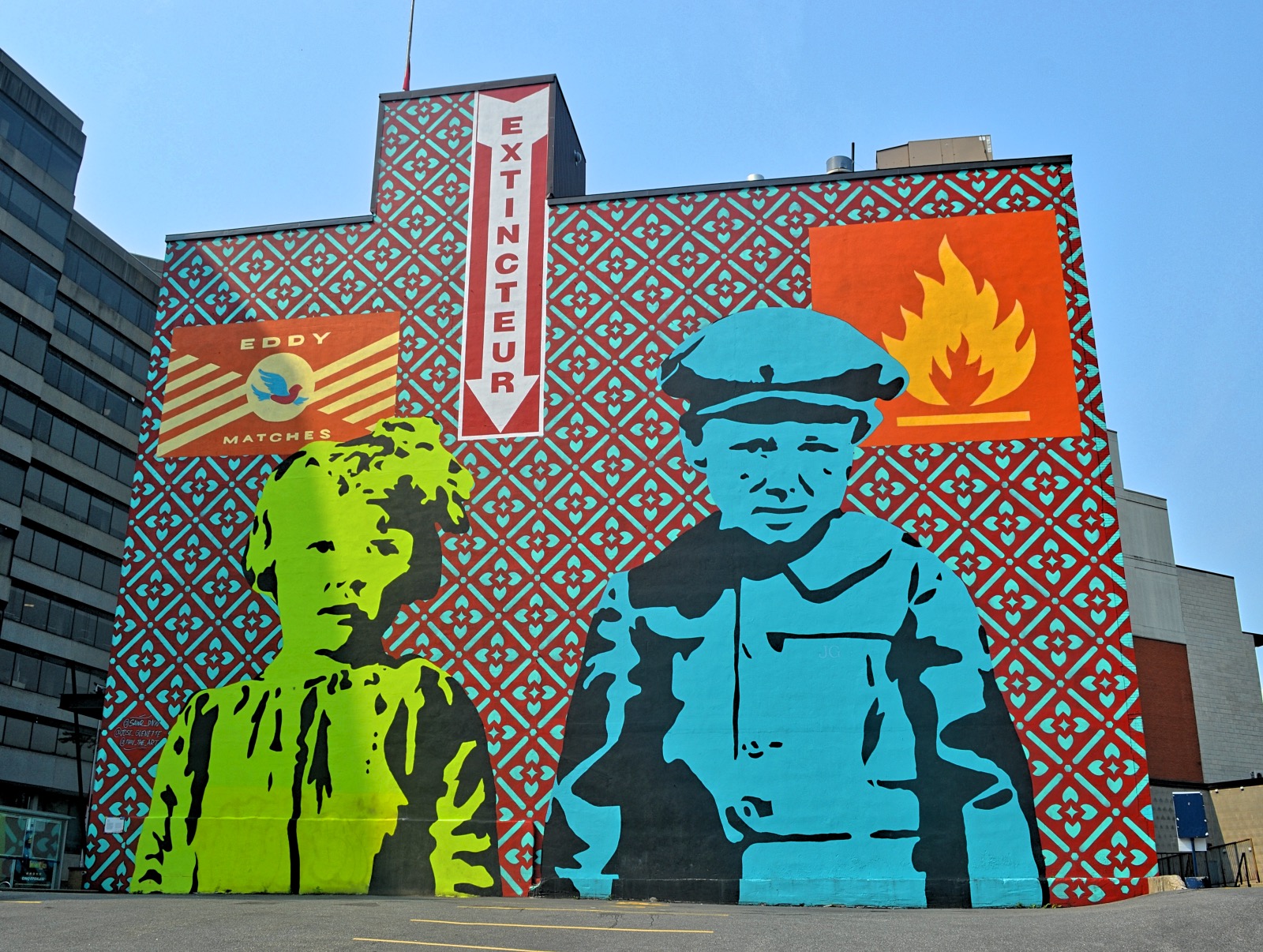
It’s tough to miss this massive artwork overlooking a parking lot near Place du Portage. It contains an image of two working-class children from the turn of the century whose father worked at the E.B. Eddy match plant, created by José Guénette, Phil Landry, and Marin Mitrasinovic. The flames near them are reminiscent of the many terrible fires that ravaged Hull at the time.
José Guénette’s artworks are always composed of people whom have actually existed. In this particular mural, there is a blend of modern and historic traits. The flame symbolizes the different fires that broke-out drought history and the extinguisher is also the same reference but with a modern twist.
Je t’appellerai bateau-feu bateau-lumière
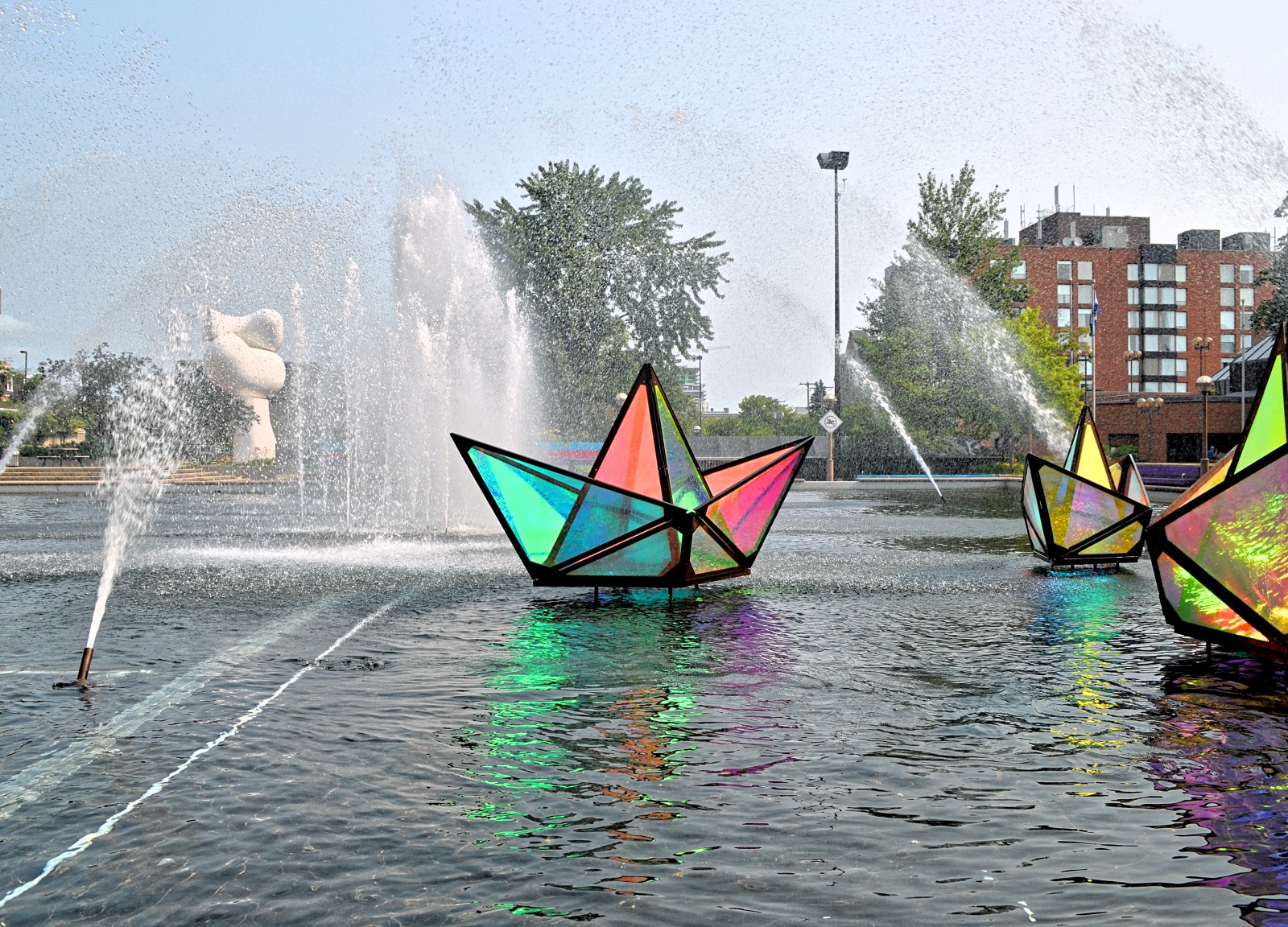
The sculpture “Je t’appellerai bateau-feu bateau lumière” was installed in the fountain in Portage Park during the 2019 version of the Cultural Trail.
Created by Mathieu Fecteau, the fountain can be admired with multiple murals on the surrounding buildings. In addition, the work of international artist Bordalo II, made entirely from recycled materials, is sure to capture your eye.
C’est la vie
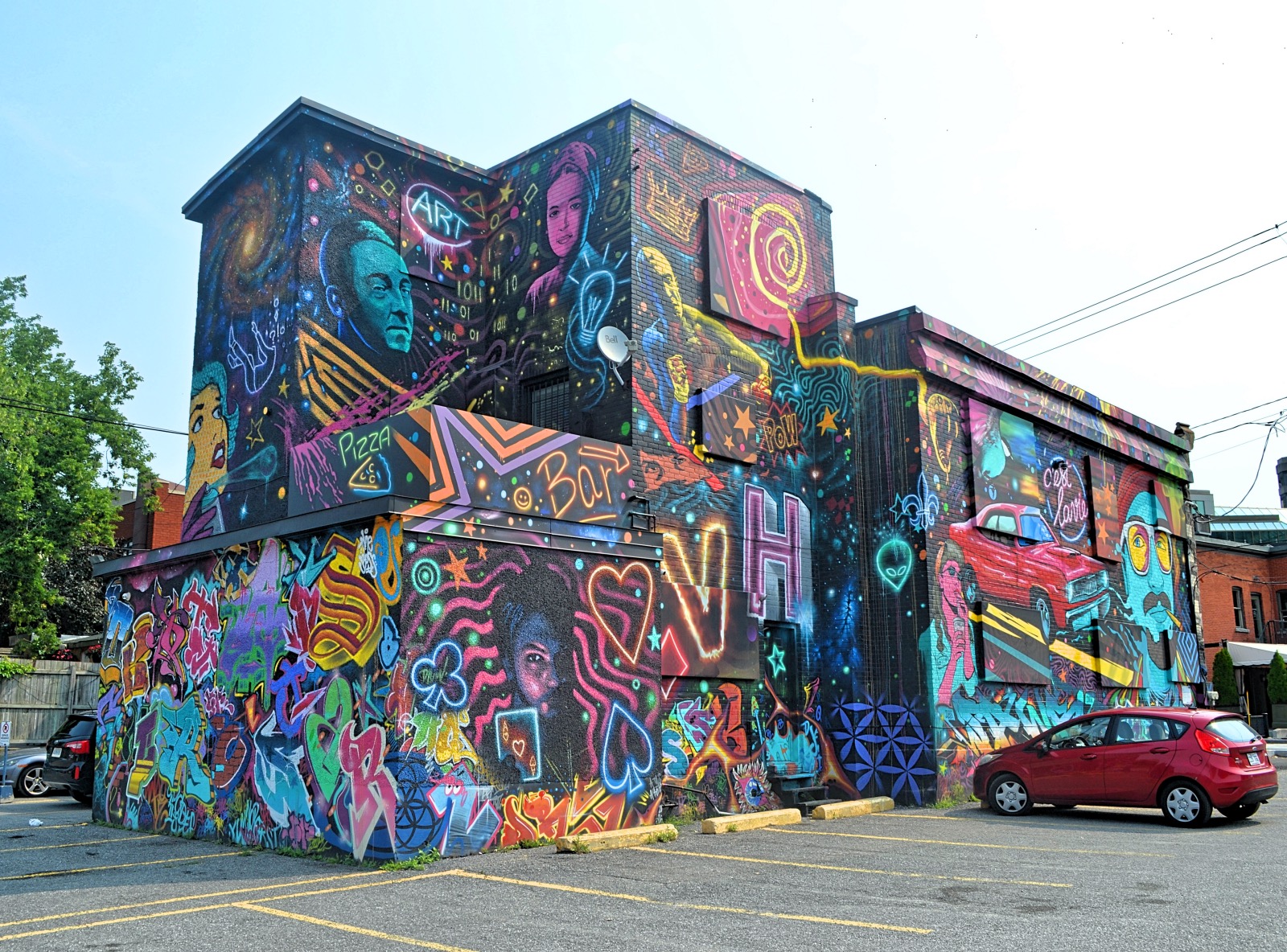
Local painters Phil Landry and Marin Mitrasinovic created this mural, which translates to “That’s Life” in French. The two artists chosen for this project already have works exhibited on the City of Gatineau‘s Cultural Trail, namely the Animosités and Pop60 collective from Mitrasinovic. They also participated in the Traces project.
The fresco presents many bright colors, and various and varied patterns. These zigzags and squares form a whole, which gives it a psychedelic style, said Mitrasinovic. Objects, such as a stop sign, and people, including two men during the Prohibition Age, are also depicted. The mural was done with rollers and spray paint, and Landry says it took almost a month and a half of long working days.
Théâtre de l’Île
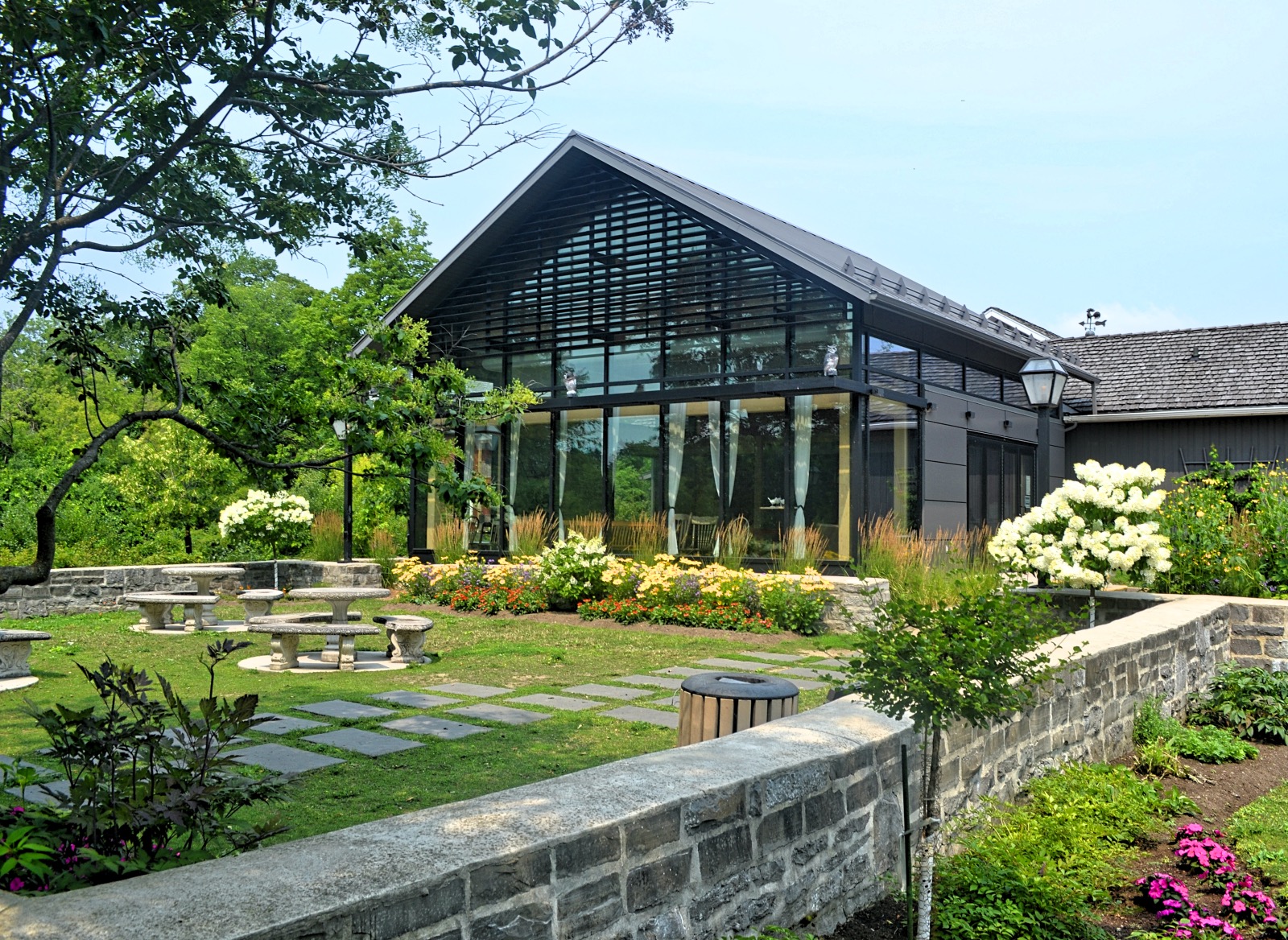
The Théâtre de l’Île is housed in a former water tower that was built in 1886 on a lovely setting. It is Quebec‘s first municipal theatre, and it features an enticing mix of community and professional theatre, ranging from classics to current works.
Sylvie Dufour, the artistic director, has been in charge of this duty for the past ten years. The Théâtre de l’Île, housed in a former water tower that has had numerous changes since its first purpose, opened in 1974, just weeks before a devastating fire destroyed the structure. Never mind: the City, as the only owner of the property, is completing the necessary modifications, and the institution has been in its current configuration since 1976. Every year, the theatre puts on six productions, all of which must be created by local artists.
Passage migratoire

The last artwork we saw before calling it a day was the best one of all. A fleet of white woven canoes with brightly coloured interiors, hung on wires over Brewery Creek near Théâtre de l’Ile. It is called Pasage migratoire. Giorgia Volpe, a Brazilian-Canadian artist, created the piece to suggest migratory themes and to reflect Indigenous knowledge and Quebec folk tales.
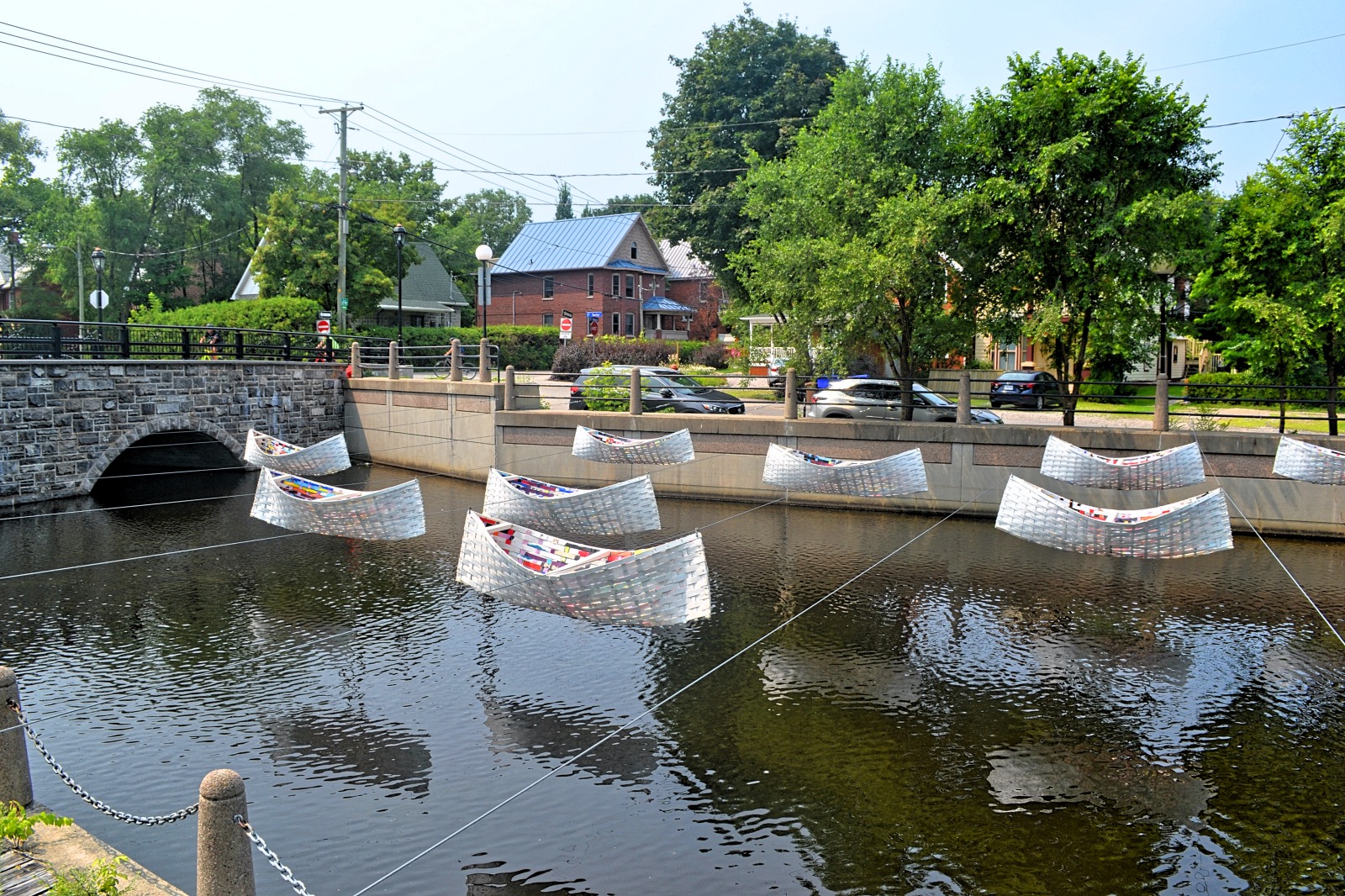
This sight is a significant part of the cultural trail, demonstrating vulnerability as well as the resistance of human and animal species through these floating braided boats. This piece pays homage to Quebec mythology, seamen’s faith, and the First Nations’ tradition.
Did you know that boats have lights on them at night? Another reason to look up to them, whether it’s in the daylight or the moonlight!
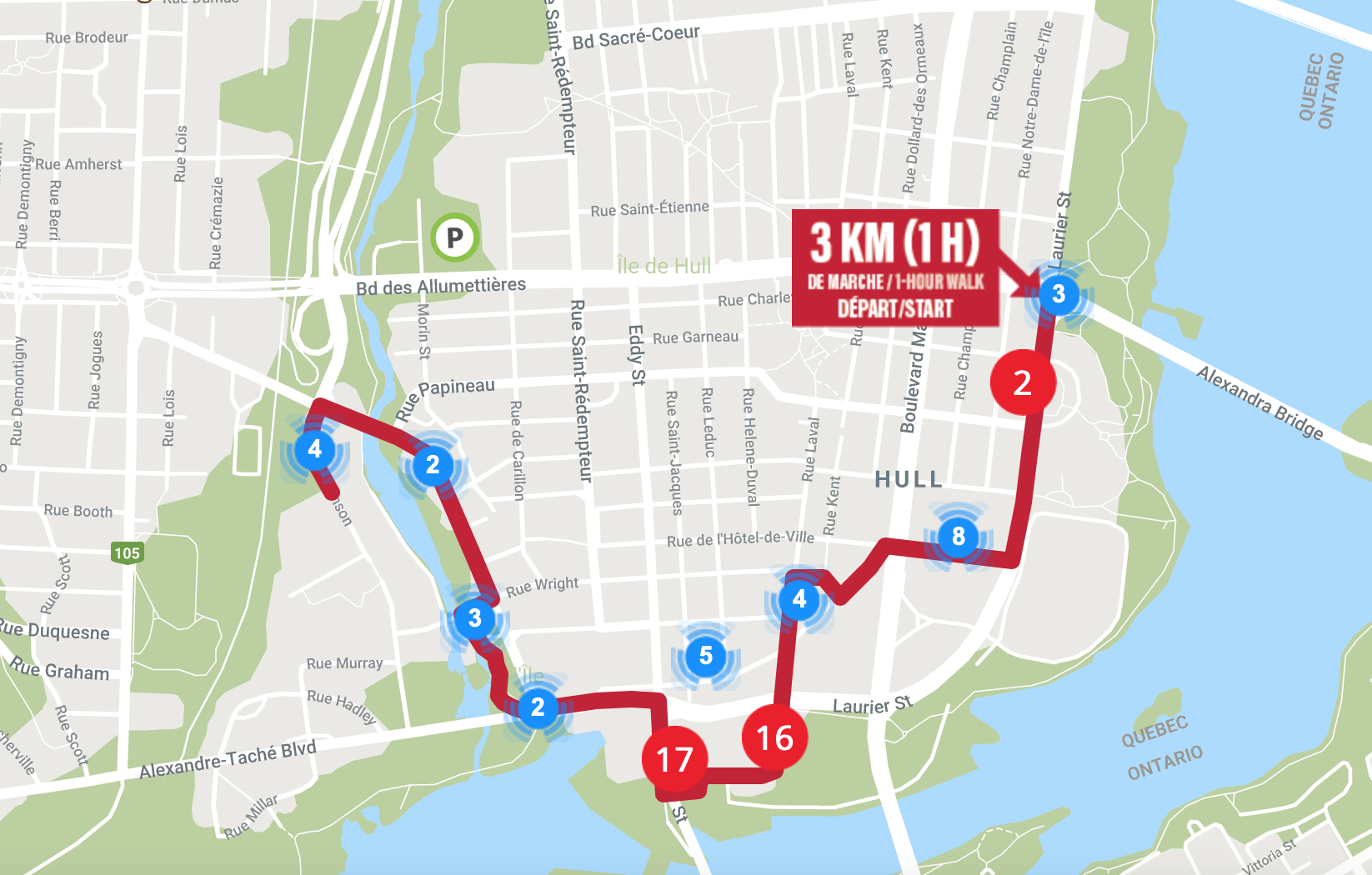
A large part of the programming for the Cultural Trail has benefited from financial support from the Quebec Ministry of Culture and Communications (MCCQ).
Hike Length: 3-km
Amount of Time to do: 1 hour
Visit Website for more info: Click Here.
. . .
Want to learn more about Gatineau? Click here.



